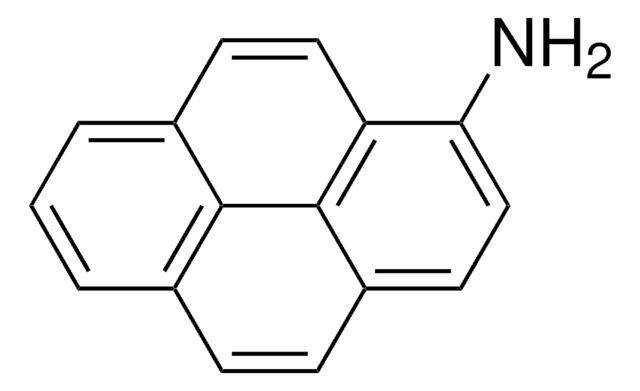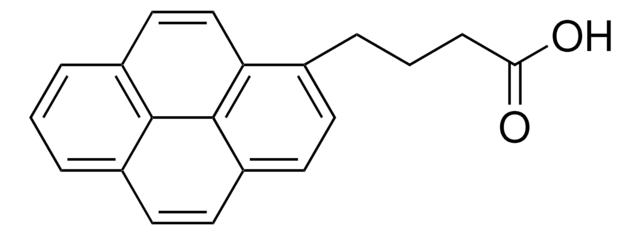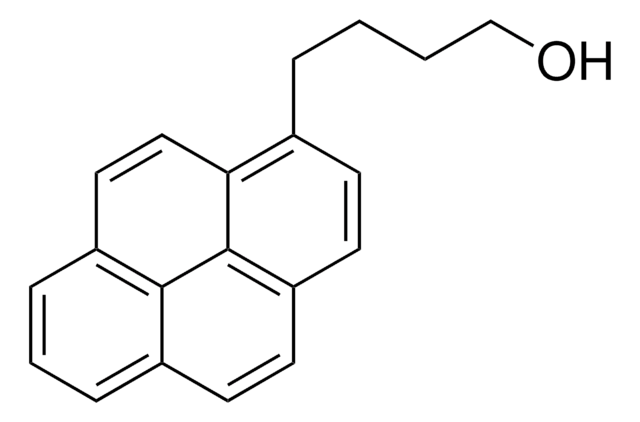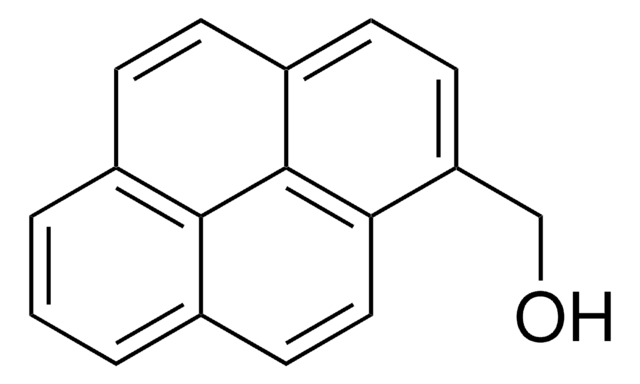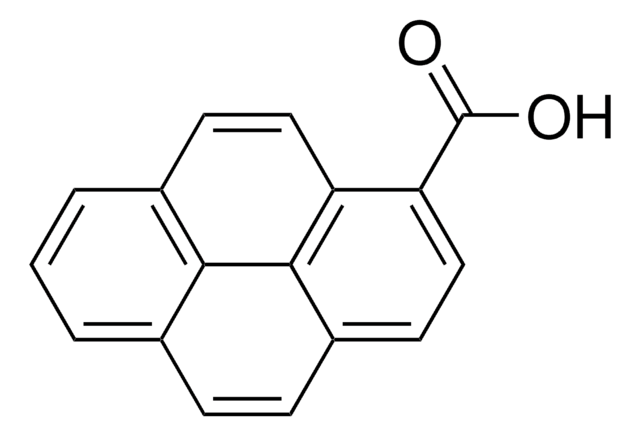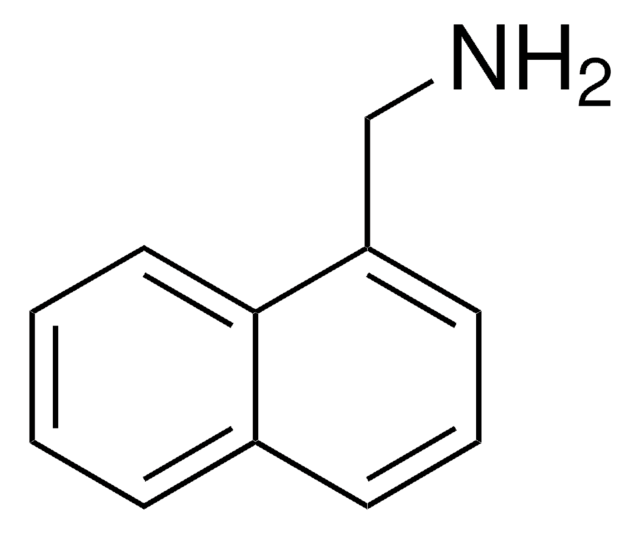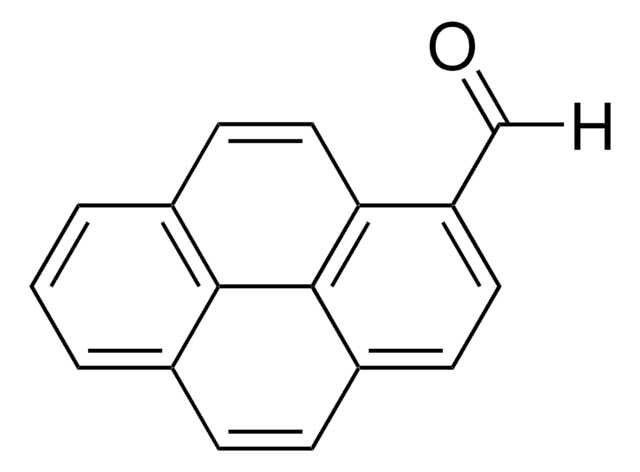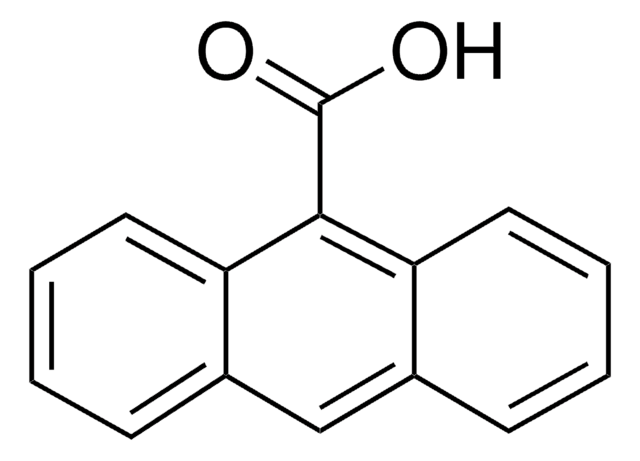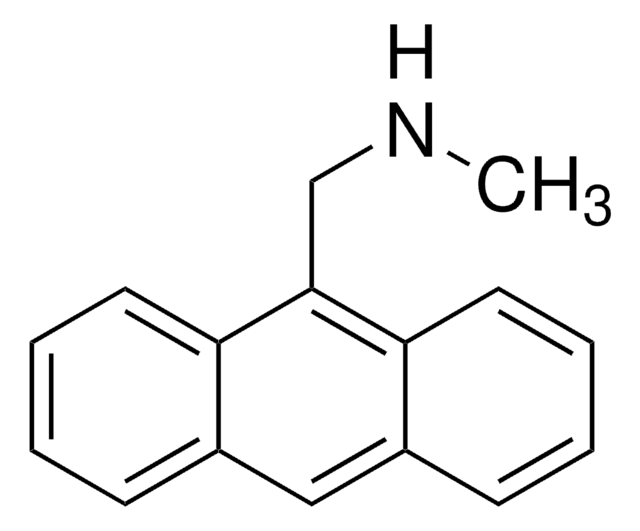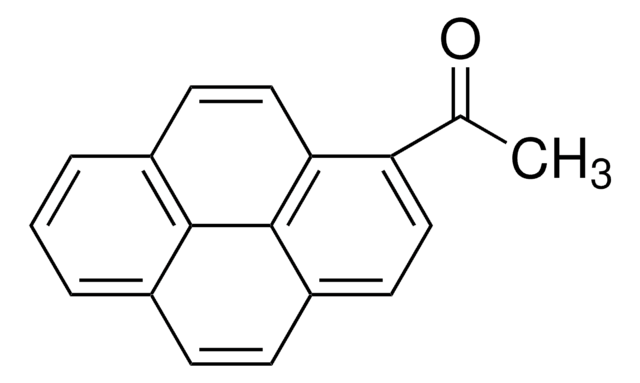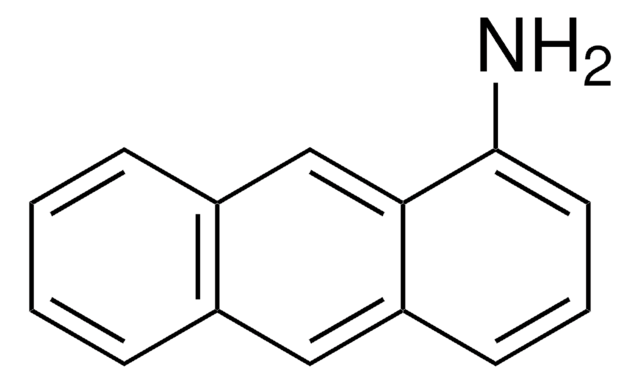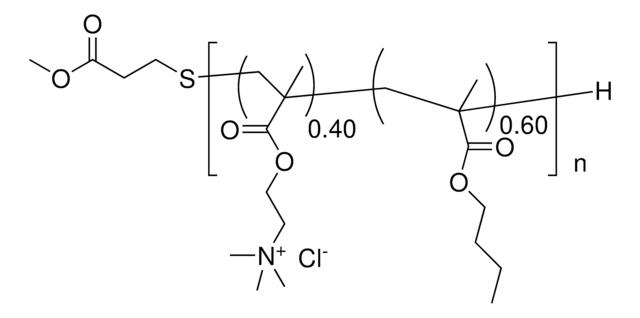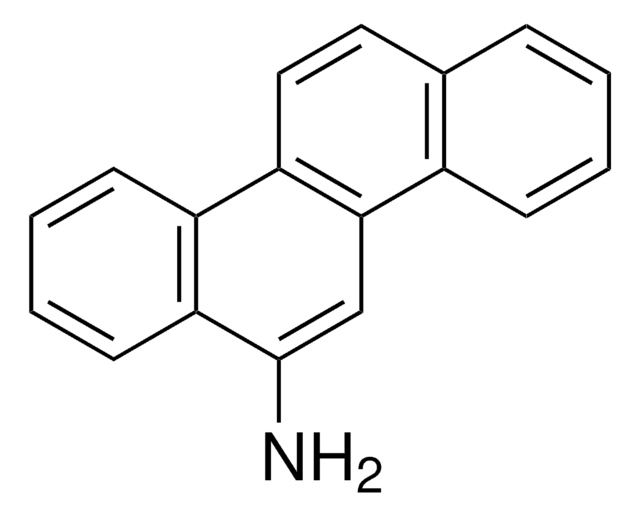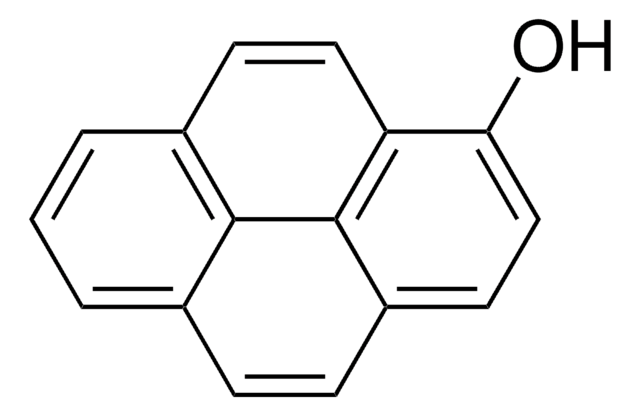401633
1-Pyrenemethylamine hydrochloride
95%
Sinónimos:
PMA
Iniciar sesiónpara Ver la Fijación de precios por contrato y de la organización
About This Item
Fórmula empírica (notación de Hill):
C17H13N · HCl
Número de CAS:
Peso molecular:
267.75
Número MDL:
Código UNSPSC:
12352100
ID de la sustancia en PubChem:
NACRES:
NA.22
Productos recomendados
Nivel de calidad
Ensayo
95%
Formulario
powder
mp
258 °C (dec.) (lit.)
grupo funcional
amine
cadena SMILES
Cl[H].NCc1ccc2ccc3cccc4ccc1c2c34
InChI
1S/C17H13N.ClH/c18-10-14-7-6-13-5-4-11-2-1-3-12-8-9-15(14)17(13)16(11)12;/h1-9H,10,18H2;1H
Clave InChI
RGNMXKKNDSHTFD-UHFFFAOYSA-N
Categorías relacionadas
Descripción general
1-Pyrenemethylamine hydrochloride is an organic building block.
Aplicación
1-Pyrenemethylamine (PyNH2) has also been used for the synthesis of:
It can also be used for the synthesis of 4,6-dichloro-2-pyrenemethylamine-1,3,5-triazine, a precursor to synthesize a star shaped polymer 4,6-bis(9H-carbazol-2-yloxy)-2-(pyrenemethylamine)-1,3,5 triazine (TPC).
- Pyrenyl hyaluronan (Py-HA), a pyrenyl-based polymer that can be used for the development of pH-triggered drug carriers.
- An electrochemical electrode of reduced graphene oxide bound with pyrene functionalized folic acid derivative.
It can also be used for the synthesis of 4,6-dichloro-2-pyrenemethylamine-1,3,5-triazine, a precursor to synthesize a star shaped polymer 4,6-bis(9H-carbazol-2-yloxy)-2-(pyrenemethylamine)-1,3,5 triazine (TPC).
1-Pyrenemethylamine hydrochloride (PyNH2) has been used for the loading of human telomerase reverse transcriptase (hTERT) small interfering RNA (siRNA) to the functionalized graphene oxide (GO) for the tumor targeting delivery of siRNA.
1-Pyrenemethylamine hydrochloride has been used in the preparation of 1-pyrenemethylamine. It may be used for the noncovalent functionalization of SWNTs with cationic moieties which binds strongly to the negatively charged phosphate backbone of the DNA. It may be used in the preparation of the following Schiff-base ligand:
- pyren-1-ylmethyl-[2-(6-{2-[(pyren-1-ylmethylimino)-methyl]-phenoxymethyl}-pyridin-2-ylmethoxy)-benzylidene]-amine
- 2(pyren-1-ylmethyl-{2-[6-(2-{[(pyren-1-ylmethyl)-amino]-methyl}- phenoxymethyl)-pyridin-2-ylmethoxy])-benzyl}-amine
Palabra de señalización
Warning
Frases de peligro
Consejos de prudencia
Clasificaciones de peligro
Eye Irrit. 2 - Skin Irrit. 2 - STOT SE 3
Órganos de actuación
Respiratory system
Código de clase de almacenamiento
11 - Combustible Solids
Clase de riesgo para el agua (WGK)
WGK 3
Equipo de protección personal
dust mask type N95 (US), Eyeshields, Gloves
Elija entre una de las versiones más recientes:
¿Ya tiene este producto?
Encuentre la documentación para los productos que ha comprado recientemente en la Biblioteca de documentos.
Los clientes también vieron
Fabien Giroud et al.
Biosensors & bioelectronics, 87, 957-963 (2016-09-26)
We report the functionalization of multi-walled carbon nanotubes (MWCNTs) electrodes by a bifunctional nitroaromatic molecule accomplished via π-π interactions of a pyrene derivative. DTNB (5,5'-dithiobis(2-nitrobenzoic acid)) has the particularity to possess both electroactivable nitro groups and negatively charged carboxylic groups.
Sudarat Yenjai et al.
Journal of photochemistry and photobiology. B, Biology, 173, 35-42 (2017-05-30)
A new photochemical reagent, succinic acid-1(1-pyrene)methylamide (PMA-SUC), was developed to recognize the specific binding sites on model proteins, egg-white lysozyme and avidin. The interaction of the photochemical reagent with the proteins was studied by UV-Vis, fluorescence spectroscopic methods and docking
Synthesis and fluorescence properties of carbazole based asymmetric functionalized star shaped polymer.
Guzel M, et al.
Journal of the Electrochemical Society, 164(2), H49-H55 (2017)
Reactively formed block and graft copolymers as compatibilizers for polyamide 66/PS blends.
Jeon HK, et al.
Polymer, 45(1), 197-206 (2004)
Intramolecular excimer formation and sensing behavior of new fluorimetric probes and their interactions with metal cations and barbituric acids.
Lodeiro C, et al.
Sensors and Actuators B, Chemical, 115(1), 276-286 (2006)
Global Trade Item Number
| Número de referencia del producto (SKU) | GTIN |
|---|---|
| 401633-1G | 4061831985566 |
| 401633-5G | 4061831985573 |
Nuestro equipo de científicos tiene experiencia en todas las áreas de investigación: Ciencias de la vida, Ciencia de los materiales, Síntesis química, Cromatografía, Analítica y muchas otras.
Póngase en contacto con el Servicio técnico